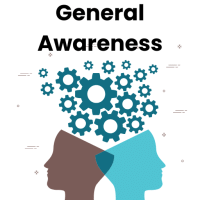SSC CGL Exam > SSC CGL Questions > Which sentence is incorrectly formed in the s...
Start Learning for Free
Which sentence is incorrectly formed in the simple present tense?
- a)The Earth orbits the sun.
- b)He understand the problem.
- c)Cats chase mice.
- d)Trees lose their leaves in autumn.
Correct answer is option 'B'. Can you explain this answer?
Verified Answer
Which sentence is incorrectly formed in the simple present tense?a)The...
Option B ("He understand the problem.") is incorrect. The correct form is 'understands' to match the singular third-person subject 'He'. In simple present tense, verbs typically add 's' or 'es' with third-person singular nouns.
View all questions of this test
Most Upvoted Answer
Which sentence is incorrectly formed in the simple present tense?a)The...
Understanding Simple Present Tense
The simple present tense is used to describe habitual actions, general truths, and facts. It typically follows a structure where the base form of the verb is used for subjects such as I, you, we, and they, while third-person singular subjects (he, she, it) require an "s" or "es" at the end of the verb.
Identifying the Incorrect Sentence
In the provided options, the incorrect sentence is:
- b) He understand the problem.
This sentence does not adhere to the rules of the simple present tense for the third-person singular subject "he."
Correct Formulation
The correct form should be:
- He understands the problem.
Here’s why:
- Third-Person Singular Rule:
- For subjects like he, she, or it, the verb must be conjugated with an "s" or "es."
- Examples for Clarity:
- Correct: She runs every morning.
- Incorrect: She run every morning.
Review of the Other Options
Let’s confirm that the other sentences are correctly formed:
- a) The Earth orbits the sun.
- Correctly uses "orbits" for the third-person singular subject "The Earth."
- c) Cats chase mice.
- This is correct as "chase" is used with the plural subject "Cats."
- d) Trees lose their leaves in autumn.
- Correctly uses "lose" with the plural subject "Trees."
Conclusion
In summary, option b is incorrect due to the failure to apply the proper conjugation of the verb "understand" for the third-person singular subject. Understanding these rules is crucial for mastering the simple present tense in English grammar.
The simple present tense is used to describe habitual actions, general truths, and facts. It typically follows a structure where the base form of the verb is used for subjects such as I, you, we, and they, while third-person singular subjects (he, she, it) require an "s" or "es" at the end of the verb.
Identifying the Incorrect Sentence
In the provided options, the incorrect sentence is:
- b) He understand the problem.
This sentence does not adhere to the rules of the simple present tense for the third-person singular subject "he."
Correct Formulation
The correct form should be:
- He understands the problem.
Here’s why:
- Third-Person Singular Rule:
- For subjects like he, she, or it, the verb must be conjugated with an "s" or "es."
- Examples for Clarity:
- Correct: She runs every morning.
- Incorrect: She run every morning.
Review of the Other Options
Let’s confirm that the other sentences are correctly formed:
- a) The Earth orbits the sun.
- Correctly uses "orbits" for the third-person singular subject "The Earth."
- c) Cats chase mice.
- This is correct as "chase" is used with the plural subject "Cats."
- d) Trees lose their leaves in autumn.
- Correctly uses "lose" with the plural subject "Trees."
Conclusion
In summary, option b is incorrect due to the failure to apply the proper conjugation of the verb "understand" for the third-person singular subject. Understanding these rules is crucial for mastering the simple present tense in English grammar.

|
Explore Courses for SSC CGL exam
|

|
Similar SSC CGL Doubts
Which sentence is incorrectly formed in the simple present tense?a)The Earth orbits the sun.b)He understand the problem.c)Cats chase mice.d)Trees lose their leaves in autumn.Correct answer is option 'B'. Can you explain this answer?
Question Description
Which sentence is incorrectly formed in the simple present tense?a)The Earth orbits the sun.b)He understand the problem.c)Cats chase mice.d)Trees lose their leaves in autumn.Correct answer is option 'B'. Can you explain this answer? for SSC CGL 2025 is part of SSC CGL preparation. The Question and answers have been prepared according to the SSC CGL exam syllabus. Information about Which sentence is incorrectly formed in the simple present tense?a)The Earth orbits the sun.b)He understand the problem.c)Cats chase mice.d)Trees lose their leaves in autumn.Correct answer is option 'B'. Can you explain this answer? covers all topics & solutions for SSC CGL 2025 Exam. Find important definitions, questions, meanings, examples, exercises and tests below for Which sentence is incorrectly formed in the simple present tense?a)The Earth orbits the sun.b)He understand the problem.c)Cats chase mice.d)Trees lose their leaves in autumn.Correct answer is option 'B'. Can you explain this answer?.
Which sentence is incorrectly formed in the simple present tense?a)The Earth orbits the sun.b)He understand the problem.c)Cats chase mice.d)Trees lose their leaves in autumn.Correct answer is option 'B'. Can you explain this answer? for SSC CGL 2025 is part of SSC CGL preparation. The Question and answers have been prepared according to the SSC CGL exam syllabus. Information about Which sentence is incorrectly formed in the simple present tense?a)The Earth orbits the sun.b)He understand the problem.c)Cats chase mice.d)Trees lose their leaves in autumn.Correct answer is option 'B'. Can you explain this answer? covers all topics & solutions for SSC CGL 2025 Exam. Find important definitions, questions, meanings, examples, exercises and tests below for Which sentence is incorrectly formed in the simple present tense?a)The Earth orbits the sun.b)He understand the problem.c)Cats chase mice.d)Trees lose their leaves in autumn.Correct answer is option 'B'. Can you explain this answer?.
Solutions for Which sentence is incorrectly formed in the simple present tense?a)The Earth orbits the sun.b)He understand the problem.c)Cats chase mice.d)Trees lose their leaves in autumn.Correct answer is option 'B'. Can you explain this answer? in English & in Hindi are available as part of our courses for SSC CGL.
Download more important topics, notes, lectures and mock test series for SSC CGL Exam by signing up for free.
Here you can find the meaning of Which sentence is incorrectly formed in the simple present tense?a)The Earth orbits the sun.b)He understand the problem.c)Cats chase mice.d)Trees lose their leaves in autumn.Correct answer is option 'B'. Can you explain this answer? defined & explained in the simplest way possible. Besides giving the explanation of
Which sentence is incorrectly formed in the simple present tense?a)The Earth orbits the sun.b)He understand the problem.c)Cats chase mice.d)Trees lose their leaves in autumn.Correct answer is option 'B'. Can you explain this answer?, a detailed solution for Which sentence is incorrectly formed in the simple present tense?a)The Earth orbits the sun.b)He understand the problem.c)Cats chase mice.d)Trees lose their leaves in autumn.Correct answer is option 'B'. Can you explain this answer? has been provided alongside types of Which sentence is incorrectly formed in the simple present tense?a)The Earth orbits the sun.b)He understand the problem.c)Cats chase mice.d)Trees lose their leaves in autumn.Correct answer is option 'B'. Can you explain this answer? theory, EduRev gives you an
ample number of questions to practice Which sentence is incorrectly formed in the simple present tense?a)The Earth orbits the sun.b)He understand the problem.c)Cats chase mice.d)Trees lose their leaves in autumn.Correct answer is option 'B'. Can you explain this answer? tests, examples and also practice SSC CGL tests.

|
Explore Courses for SSC CGL exam
|

|
Signup for Free!
Signup to see your scores go up within 7 days! Learn & Practice with 1000+ FREE Notes, Videos & Tests.


























